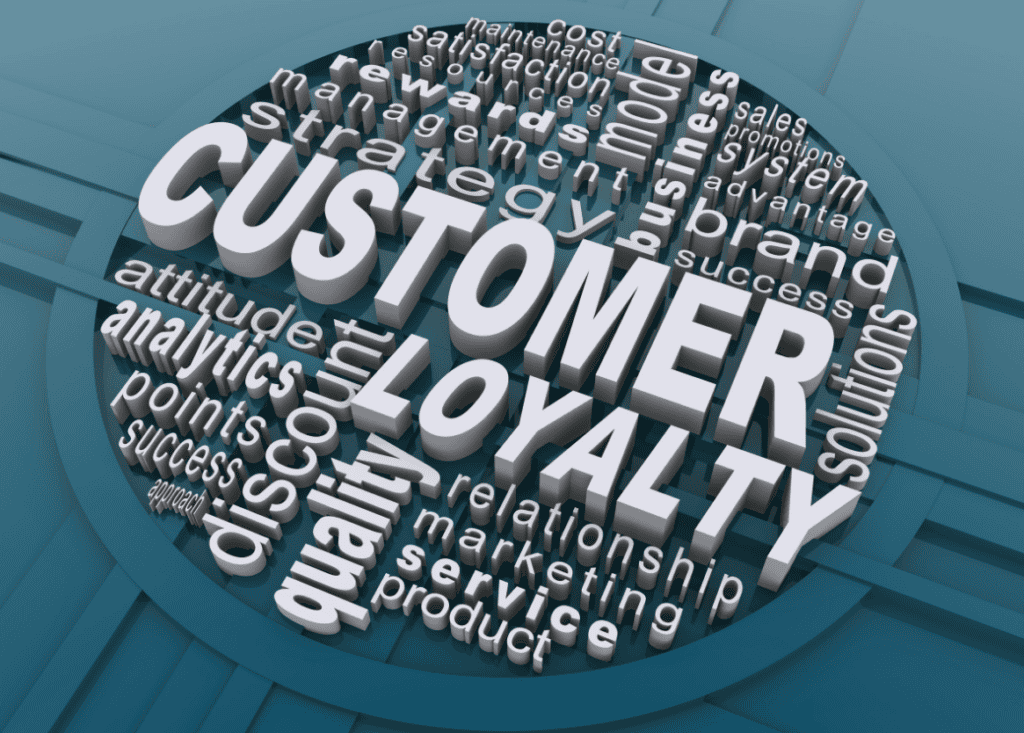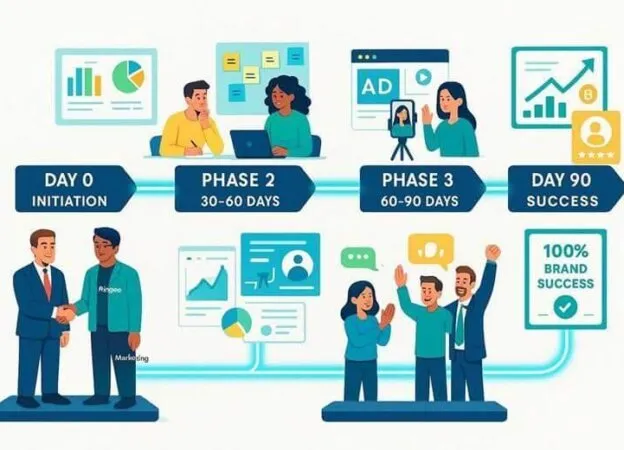In an increasingly competitive landscape, delivering standout customer experiences and building customer loyalty separates industry leaders from the rest how brands make people feel matters tremendously in shaping satisfaction, loyalty, and lifetime value.
Table of Contents
Mapping journeys to uncover pain points, orchestrating seamless engagements across channels, and continuously gathering customer feedback steer process enhancements that ultimately accelerate growth.

This guide covers essential principles for building customer loyalty, and understanding, strategizing, and activating world-class customer experiences.
Understanding the Customer Journey
The customer journey depicts the end-to-end process of engaging with a brand, from initial discovery to becoming loyal advocates. Typically encompassing five phases, understanding specific touchpoints and emotions within each fuels experience optimization.

Here’s a breakdown of the typical customer journey stages:
- Awareness: The moment a person first becomes conscious of a brand, product, or service that exists to fulfill their needs. Initial impressions matter immensely.
- Consideration: As the person researches options deeper, questions on features, value, quality, and differentiation arise that content must address. Case studies, product tours, etc, nurture interest.
- Decision: Finalizing the choice to purchase amidst competing options depends on conveying excellence people come to expect from the brand through messaging and interactions. Pricing, promotions, or trials eliminate friction.
- Retention: Ensuring customers feel rewarded for choosing the brand means consistently delivering on quality promises, resolving issues rapidly, and rewarding loyalty over years of partnership through expansion purchases or advocacy involvement.
- Advocacy: When extreme satisfaction with product performance and human service makes customers inclined to refer friends or publicly endorse/defend the brand on review sites and social channels. They feel like insiders proud of their membership.
Understanding Customer Experience (CX)
Customer experience represents the sum total of interactions someone has with a brand and its services, which are shaped crucially by how those made them feel. Customer experience intricately links to impressions formed, trust built, expectations set, and sentiment shifting throughout the journey.
While advertising and packaging shape early opinions, product quality and reliability prompt purchases, and service responsiveness ensures retention, people judge brands predominantly on how end-to-end experiences impact them emotionally.
Why Does Building Customer Loyalty Matter?
Obsessing over customer experience lends businesses sustainable competitive advantages that transaction-focused rivals cannot match:
- Increased Customer Loyalty: 86% of buyers will pay more for a better customer experience. Investments made in optimizing journeys lead to improved retention and share of wallet as satisfied customers passionately stick with brands that respect their time and needs.
- Enhanced Brand Reputation: Customers broadcast their delight or dissatisfaction to global audiences by amplifying review culture and social media. Consistently positive interactions shared by vocal brand ambassadors bolster reputations and trust.
- Improved Customer Lifetime Value: Loyal, satisfied customers who feel understood spend 140% more than those who report poor experiences. Nurturing their seamless journey translates into vastly higher lifetime values from expanded renewal purchases and longevity of partnership.
- Reduced Customer Churn: Research shows 70% of consumers switching brands cite poor customer experience as the catalyst. Fixing pain points prevents attrition leakage that new customer acquisition cannot offset cost-effectively in the long term.
- Enhanced Employee Engagement: Investing in employee experience through customer journey insight sharing, feedback forums, and success stories builds engagement. Staff feel purposeful in improving something community members vouch for.
- Increased Customer Advocacy: When customers receive “red carpet” treatment through swift issue resolution, personalized rewards, and community perks, they are surprised and delighted and voluntarily advocate publicly.
The Key Elements of a Winning Customer Experience Strategy
Crafting consistently exceptional journeys depends on incorporating these essential components:
- Customer Journey Mapping: Visualize major touchpoints across purchase/user lifecycles. Empathize through customer analytics, interviews, and role-playing. Journey analysis uncovers pain points and prioritizes trouble areas needing workflow, messaging, or tools improvement across sales and service interactions.
- Customer Segmentation: Group customers into archetype clusters based on behavior analysis (recency, frequency, spending), personalized needs, and common motivations. Create targeted experiences that match expectations for new customers, growing partners, and loyal advocates.
- Omnichannel Experience: Integrate engagement across service channels like email, text/chat, online self-service, public review platforms, and phone for convenient continuity. This builds trust through persistent accessibility. Assign individual account reps to coordinate complex inquiries.
- Data-Driven Decision Making: Quantitatively connecting journey improvements to revenue return, cost savings, and customer metric benchmarks (churn, NPS) builds business cases, driving further experience maturity.
- Employee Empowerment: Encourage employees to proactively surprise customers and hardly involve managers in basic requests that need agility. This prevents delays and frustrates customers. Data access also lets staff personalize recommendations.
- Customer Feedback Mechanisms: Intercepting feedback is crucial for driving refinements that are aligned with expectations. Multichannel data gathering—surveys, interview panels, and monitoring public review sites—helps conceptualize improvements most meaningful to customers.
- Continuous Improvement: Build iterative pilot launch workflows spanning ideation, prototyping, controlled rollout, and monitored scale-up of experience-enhancing initiatives. Accelerate benefits delivery through agile collaboration between digital, analytics, and customer teams.

Building Customer Loyalty Roadmap
Building customer loyalty and making customer journeys frictionless, consistent, and emotionally compelling depends on executing a step-by-step recommended customer experience roadmap:
Define Your CX Vision and Goals:
To structure project charters and investments and rally leadership, employees, and customers around an aspirational, human-centric definition of interactions.
Assess Your Current State:
Compile quantitative journey analytics and qualitative feedback detailing precisely how customers feel at various touchpoints—gauge priorities by severity of pain.
Prioritize Initiatives:
Categorize planned projects by complexity, required investments, the expected impact on loyalty marker improvements, and interdependencies. Sequence aggressively for early wins.
Develop Action Plans:
For each initiative – whether rebuilding digital self-service portals or enhancing call center agent training – detail concrete objectives, milestones, metrics, resources, tools, and managerial responsibilities across participating groups in detailed plans.
Implement and Monitor Progress:
Launch roadmaps with controlled circulation to users or regions to manage risk. Through communication campaigns and dashboard reporting, provide clear visibility to success indicators, promoting transparency on outcomes.
Continuously Refine and Improve:
Regular consumer surveys, user interviews, and monitoring of product support cases fuel further innovation even as maturity on initial projects hits stabilization. Prioritize tackling emerging friction areas and lock in gains through platform consolidation and knowledge transfers between groups.
Final Words On Building Customer Loyalty
Obsessed brands who successfully activate customer centricity reap game-changing benefits in loyalty, revenues, and lower servicing costs over consumer-indifferent competitors.
But this requires embracing customer experience excellence as a core strategic vision backed continuously through investments in journey mapping, integrated cross-channel engagement capabilities, and voice-of-the-customer feedback loops.
Over time, creativity purely focused on eliminating consumer friction and engineering emotional affinity pays off exponentially.



